The Four Lifts on the Canal du Centre and their Environs, La Louvière and Le Roeulx (Hainaut)
By Rachel Heller
What are the Four Lifts on the Canal du Centre and their Environs?
When the Canal du Centre was built in Belgium through an important coal mining area, the distance it covered was not far – 30 km or 13 miles. The problem was that the difference in water level between the Meuse and the Scheldt rivers was very large. The situation necessitated an innovative and efficient way to allow river traffic to navigate the canal.
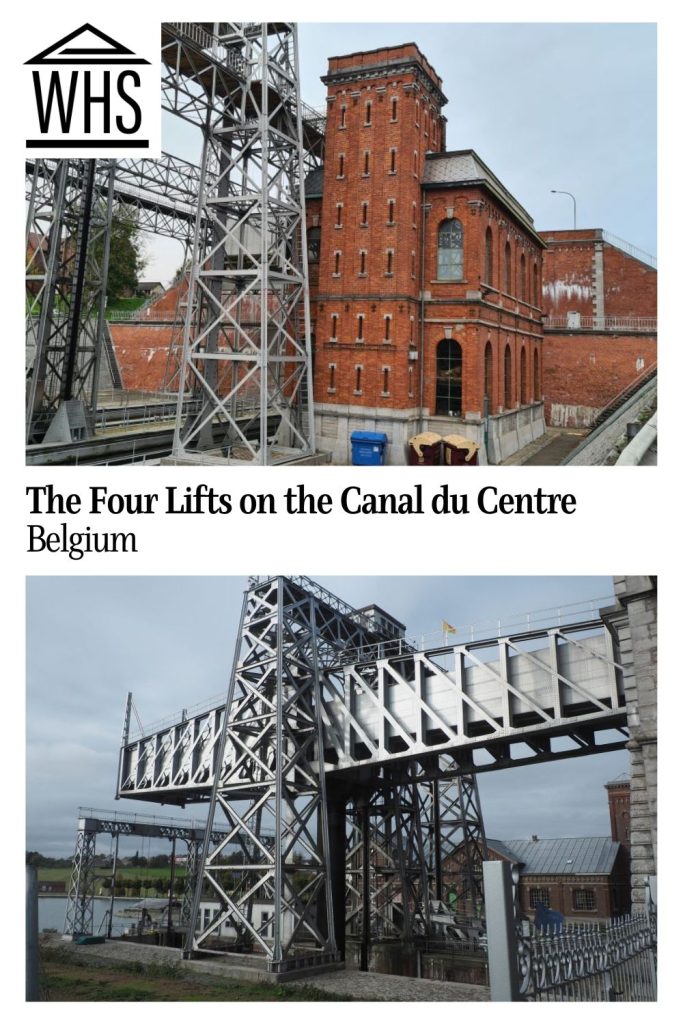
Disclosure: This article contains affiliate links. Making a purchase through an affiliate link will mean a small commission for this website. This will not affect your price. Privacy policy.
The solution was to build a few locks (4 meters or 14 feet each), which were the traditional method of making canals navigable, but also to build a series of four boat lifts. These lifts carry boats up or down a total of 66 meters (217 feet), or 15-17 meters each (49-56 feet). Locks can’t handle that big of a level change.
- Boat Lift 1 (1888): Houdeng-Goegnies
- Boat Lift 2 (1917): Houdeng-Aimeries
- Boat Lift 3 (1917): Strépy-Bracquegnies
- Boat Lift 4 (1917): Thieu
An Englishman named Edwin Clark designed the lifts. They work hydraulically, using the power of the water in the two open-topped tanks as counterweights. One rises as the other descends, carrying the boats from one level to the other.
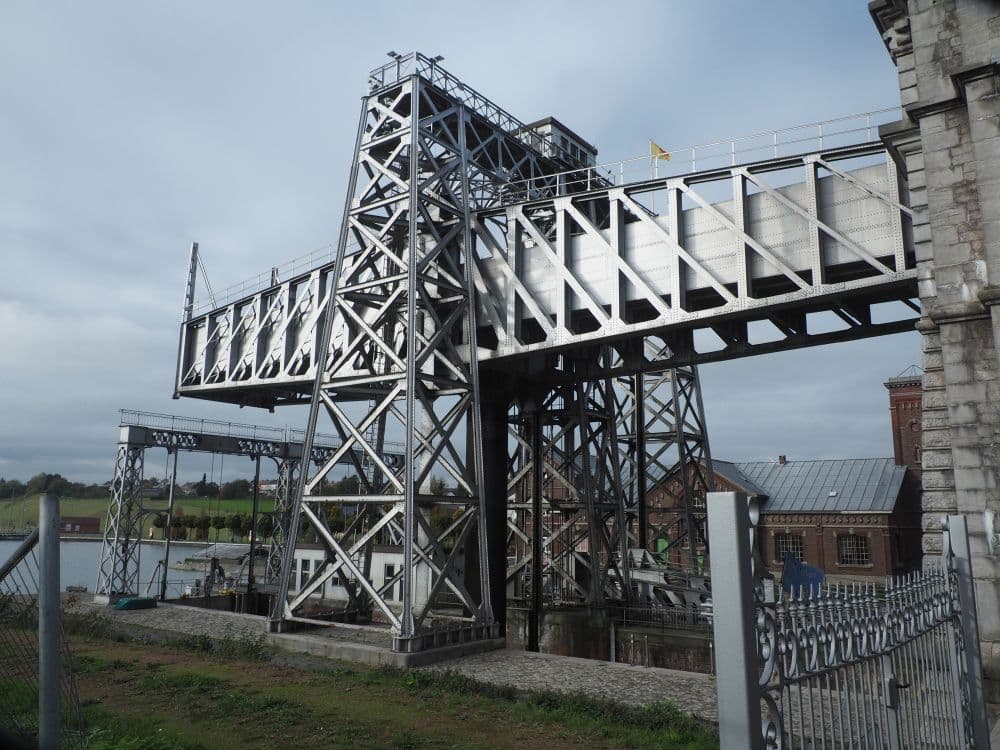
All four locks are still operational, though they are only used for small leisure boats nowadays. The larger freight-carrying ships now pass through a far larger boat lift. Completed in 2002, the new lift works more like an elevator, allowing its two tanks to move independently. The larger commercial ships use a separate parallel canal built in this century. The original canal is reserved for recreational use.
Why are the Four Lifts on the Canal du Centre a UNESCO World Heritage site?
These technological achievements “bear exceptional testimony to the remarkable hydraulic engineering developments of 19th-century Europe,” according to UNESCO. The technology was advanced and innovative for its time. The fact that they are still operational makes them particularly special.
The UNESCO designation also includes the canal itself, as well as several related structures. For example, it includes the buildings housing the machinery that operates the lifts, a few houses for the workers on the lifts, and an old lock that is no longer in use.
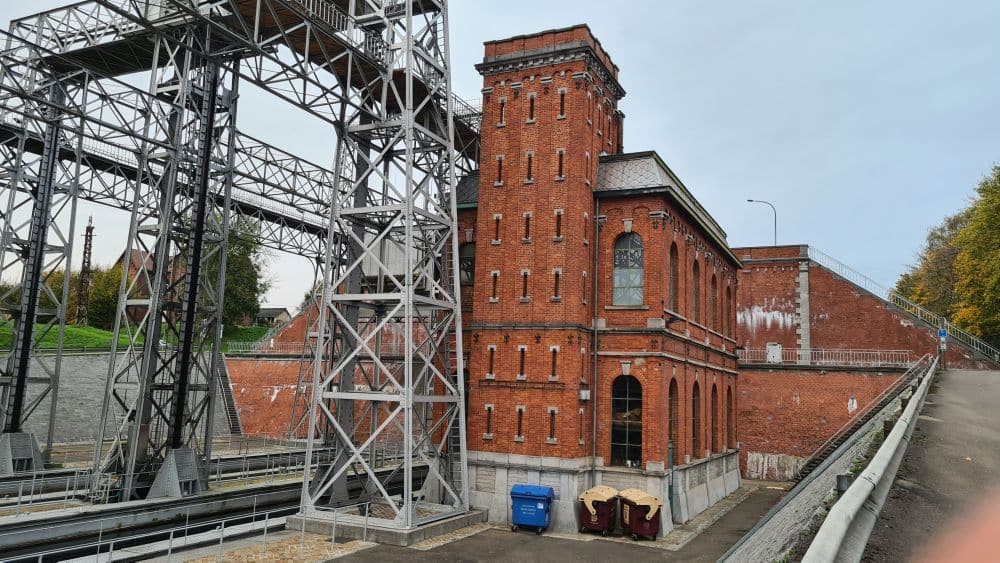
What can you expect on a visit to the Four Lifts on the Canal du Centre?
I visited in the fall, and the lifts didn’t seem to be in use. That’s not particularly surprising since most people take their vacations in the summer, and the summer is the most pleasant time to be out on a boat. So in the summer is when you’re most likely to see any action at the lifts.
The canal itself is very pretty. It was planted with trees when it was built and many of these, now over a hundred years old, still line the canal. The distance covered by the four locks is about seven kilometers (4.3 miles), so on a nice day it would be a very pleasant, leisurely walk. The canal paths are still there. In the old days it was horses, mules, women or small children who pulled boats along the canals, using these paths.
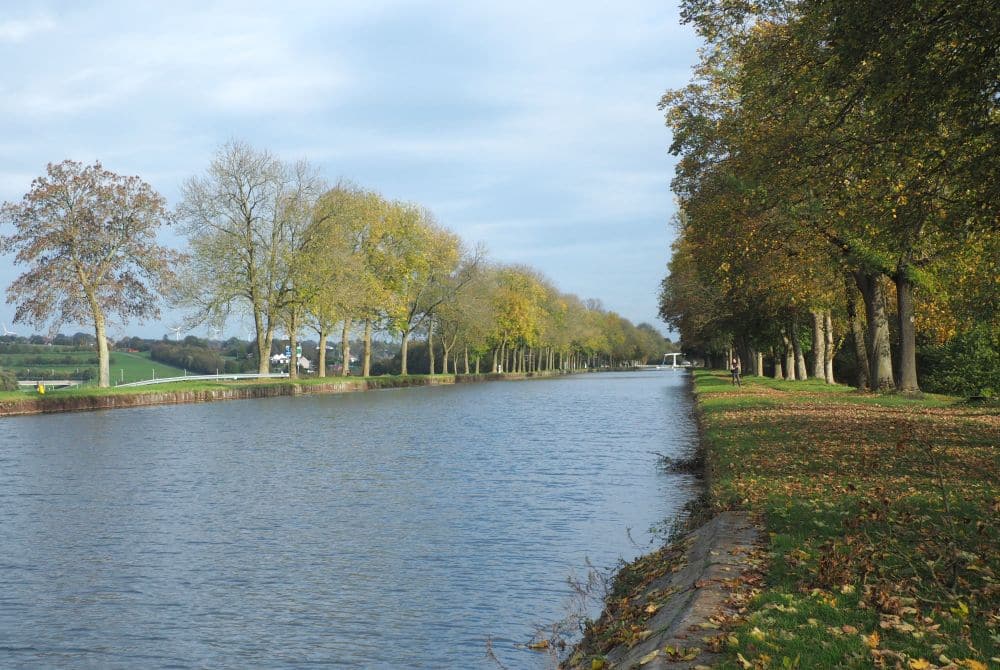
The 2002 lift, called the Strépy-Thieu boat lift, is a huge concrete monstrosity that now carries the larger ships up and down 73 meters (240 feet). It contains a museum about the boat lifts, but also touching on the developments in canal boats – like their switch from being pulled by humans to being powered by engines.
We watched the Strépy-Thieu boat lift raise a long canal boat filled with scrap metal. I can’t even imagine how powerful these engines are that carry the boats up and down. Remember, this boat lift doesn’t work by hydraulics; it uses massive concrete counterweights moved by electric motors pulling cables through pulleys, taking seven minutes in one direction. It can lift ships up to 1350 tons. Apparently, because of displacement, the weight in the tank doesn’t vary that much no matter if they’re lifting just water or if there’s a boat in it too. The total weight each tank lifts is somewhere between 7500 and 8000 tonnes.
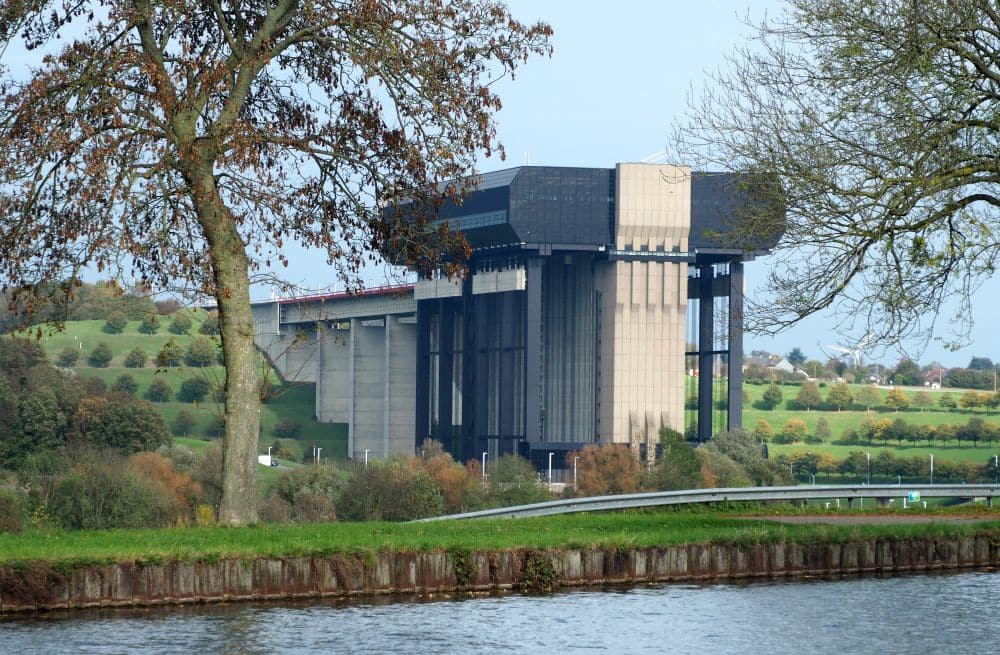
Are these boat lifts worth visiting?
That depends on your interests. If industrial history is your thing, you’ll love these. It’s also the kind of place that kids will love, at least in the summer months when they can see the lifts in action. Just be careful along the canal paths because there is no fence!
On the other hand, if engineering and the Industrial Revolution are not things that interests you, you might just want to give it a miss.
It would certainly be a pleasant place, if the weather is good, to take a long walk or a bike ride along the canal.
Here are some other UNESCO sites dating from the Industrial Revolution in Europe that you might want to read about:
- UK (England): Cornwall and West Devon Mining Landscape
- UK (Wales): Pontcysyllte Aqueduct and Canal
- Sweden: Grimeton Radio Station, Varberg
- Netherlands: D.F. Wouda Steam Pumping Station
Tips for visiting the Four Boat Lifts on the Canal du Centre
As mentioned above, go on a nice day in the summer or late spring, when the lifts will be busier than when we visited. Take a walk along the seven-kilometer stretch of canal where the lifts are and enjoy watching the boats travel up and down.
You can also take a short boat trip and experience the lifts from inside a boat as it’s carried up and down.
Make sure to visit the Strépy-Thieu boat lift as well. It’s huge and quite ugly, in my opinion, but its size and the distance it can move freight-carrying boats is pretty awe-inspiring. You can visit the museum inside the building. From up high, you can see the view of the lower canal and the scenery beyond it. From outside near the front door on the lower level, you have a good view of the ships themselves as they enter and exit the tanks. The building is closed to the public November to March.
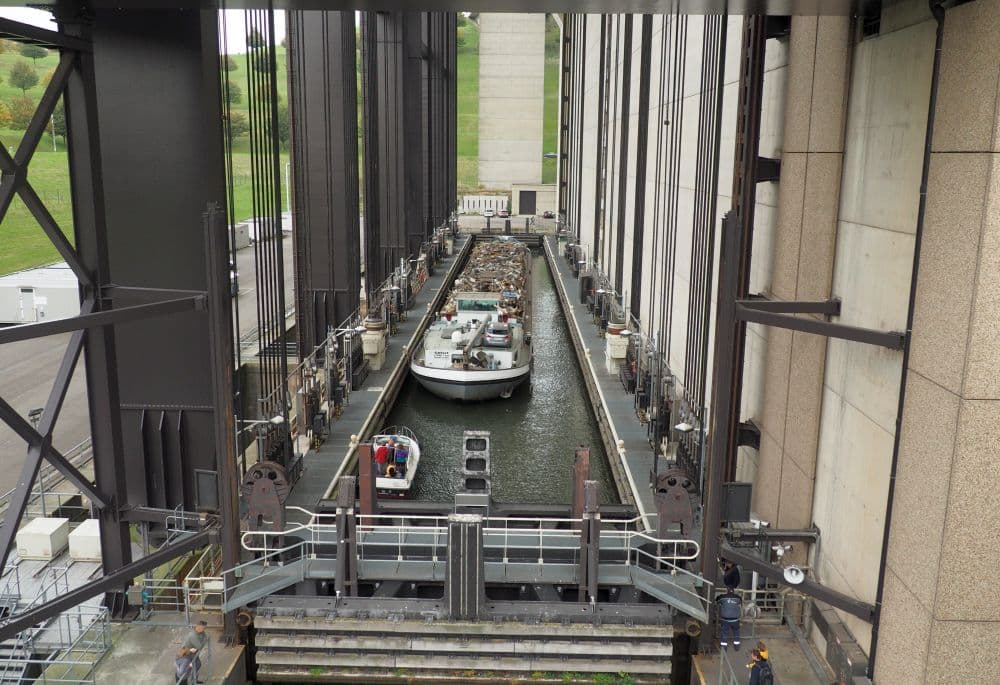
The historical lifts are numbered 1-4. Number 1 is the oldest. The other three look pretty similar to each other. If you’re short on time, see just number 1 and 2, plus Strépy-Thieu.
On the Strépy-Thieu website, you can book sightseeing boats (either guided or to pilot yourself) to go through either the historic boat lifts or the Strépy-Thieu lift.
Book accommodations in or near La Louvière.
Where are the boat lifts?
The four UNESCO-listed lifts and the Strépy-Thieu lift are all near the Belgian town of La Louvière, southwest of Brussels.
By car: From Mons it’ll only take about 20 minutes to get to any of the lifts. From Brussels it’s about an hour, barring traffic. Compare car rental prices here.
By train: You can take a train from Brussels to La Louvière-Centre in about an hour, or from Mons in half an hour. From La Louvière-Centre, either take a taxi or bus or walk about 1.8 kilometers to get to Lock 1. To get to Strépy-Thieu from La Louvière-Centre, take a bus for 20 minutes to the Thieu Ascenseur stop.
For more information about the Four Boat Lifts on the Canal du Centre, with opening hours and admission fees, see the Canal du Centre official website. The website is only in Dutch and French, so use a translator app.
Have you been to the Four Lifts on the Canal du Centre? If so, do you have any additional information or advice about this UNESCO World Heritage site? Please add your comments below!

